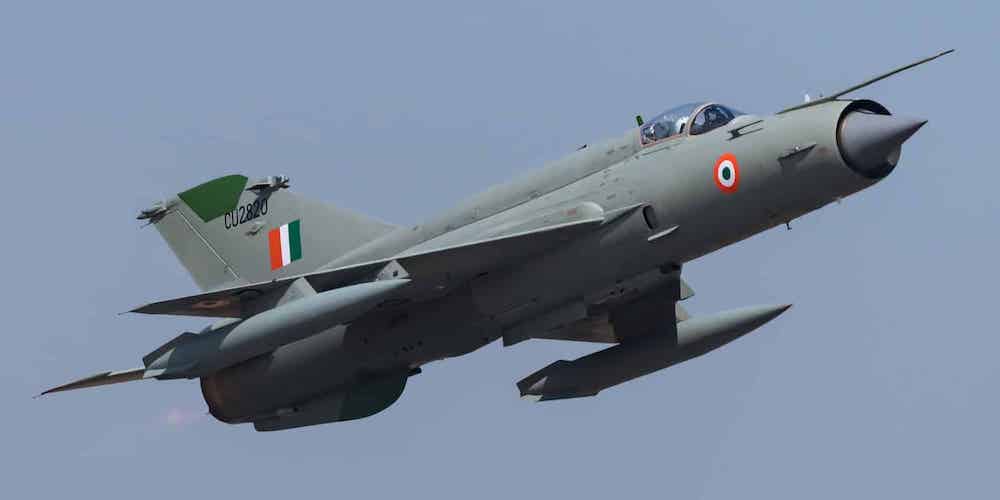Farewell to MiG-21

During an informal discussion on India’s defence sector with Western European military officers in the 1980s, this writer was asked: why a ‘democratic’ India was buying defence equipment from a ‘communist’ Russia. Since furnishing details and data would not have helped to remove their political conviction, the response was factual: “because we get what we require cheaply, against our export of rice, textiles and tobacco.”
India could not afford much of the Western armament in that era. Nor was access to them easy due to the “Cold War” politics. It was also the high noon of ‘druzhba’ – Indo-Soviet Friendship. Although no longer “bhai-bhai”, old ties have endured. We still play our respective cards in a multi-polar world, mostly in collaboration, sometimes in conflict.
A significant symbol of the ‘druzhba’ era, which marked the height of cooperation, has just retired. The Indian Air Force (IAF) has phased out MiG-21, its principal warhorse for many years.
When it flew, it earned glory for the IAF. Recall 1971, when a MiG-21 formation of four bombed Dhaka’s Tejgaon airport, ending all resistance in East Pakistan (now Bangladesh) by the Pakistan Air Force.
The conflict’s end was hastened when, on December 14, 1971, Wing Commander Bhupendra Kumar Bishnoi led a group of four MiG-21s and targeted the East Pakistan Governor’s home. The rockets fired through the dome blasted his office when a meeting was on. Such precision firing was unprecedented and was not repeated by any combat aircraft anywhere in the world till the arrival of laser-guided missiles a quarter century later.
Forty-eight years later, in 2019, flying a MiG-21 Bison, Wing Commander Abhinandan Wardhaman shot down a Pakistani F-16 before being shot down himself and captured.
India began inducting the MiG-21 in 1963 to fill the gap after the 1962 conflict with China. It marked a radical change in its approach and heralded a new era of defence preparedness, away from the West. Over 850 were acquired or made indigenously under license at HAL (Hindustan Aeronautics Limited). This partnership also aligned with India’s goal of building an indigenous military-industrial base.
India was the first outside the erstwhile Soviet Union to fly it, and it also flew it the longest, in conflicts in 1965, 1971, and Kargil (1999), till Pulwama in 2019. However, the Wardhaman incident underlined the bravery of IAF pilots, and also the limitations of the MiG-21 in modern combat.
India retained the MiG-21 in service for far too long. Over-reliance came at a tragic cost: the MiG-21 developed a reputation as the “Flying Coffin” because of its high accident rate, especially in the 1990s and 2000s. Many accidents were due to ageing airframes, maintenance issues, and sometimes pilot error. By some estimates, over 200 pilots and crew lost their lives in MiG-21 crashes.

A terse reminder came with a pilot dying while flying a MiG-21 in the film “Rang De Basanti”, leading to youths murdering the country’s defence minister. The film censors allowed the sequence, but with an explanatory statement by the IAF.
However, an analysis conducted in 2021, published by The EurAsian Times, has revealed that the perception of the MiG-21 being a ‘flying coffin’ was not supported by facts. The percentage analysis of the yearly loss of IAF aircraft suggested that the MiG-21 was at the bottom, with just a 0.55 per cent peacetime attrition rate in 58 years, while other aircraft were far above in the queue.
MiG-21 was retained for so long because of the serious shortage of combat aircraft. The IAF operates only around 31 squadrons (each with 18-20 aircraft), which is well below its sanctioned strength of 42 squadrons needed to counter dual threats from China and Pakistan.
The shortfall of 200 jets reflects delays in procurement and production bottlenecks. It is due to bureaucratic delays, but above all, bad decision-making at the political level.
Military procurements were disrupted due to controversies surrounding the Swedish Bofors gun and German submarine purchases in the 1980s, as well as the Russian Sukhois in the 1990s. Charges of corruption have also been made in the purchase of the French-made Rafale aircraft.
Arms purchase involves competing foreign suppliers. The suppliers who lose the deal invariably engage in propaganda. There are risks, but decisions have to be taken in national interest because delayed decisions, as has happened to the IAF, cause the armed forces to suffer.
The induction of more advanced aircraft like the Sukhoi Su-30 and Rafale signifies a strategic shift towards enhancing combat capabilities and reducing operational risks.
India has diversified its fleet and now emphasises the Rafale (French 4.5 gen fighter), Sukhoi Su 30MKI (Russia India modified heavy fighter), the Indigenous Tejas Mk 1A, Mk 2, and eventually the AMCA, a fifth-generation stealth fighter. Russia itself is not promoting new MiG designs (like the MiG-35) aggressively. India has shown little interest in the MiG-35 because it does not offer significant advantages over what the IAF already flies.
Meanwhile, the ‘cousins’ are very much at work. The Su-30MKI is the backbone of the IAF (over 260 in service, more being upgraded). HAL is producing and upgrading Su-30MKIs with better radar, avionics, and weapons. India is also interested in studying the Su-57 (PAK FA) stealth fighter programme, but has not committed to purchase. Its challenge post-Operation Sindoor is to fight the Chinese-Pakistani combine, not only in weapons and aircraft, but also in coordination in deploying them in action.
The MiG-21 deserves to be remembered not for its accidents but for its role in building the IAF into a modern fighting force, and for the brave pilots who flew it with distinction. With induction of the upgraded Tejas Mark 1A, their departure marks the end of an era as India indigenises and seeks options elsewhere. That is the way to go.


